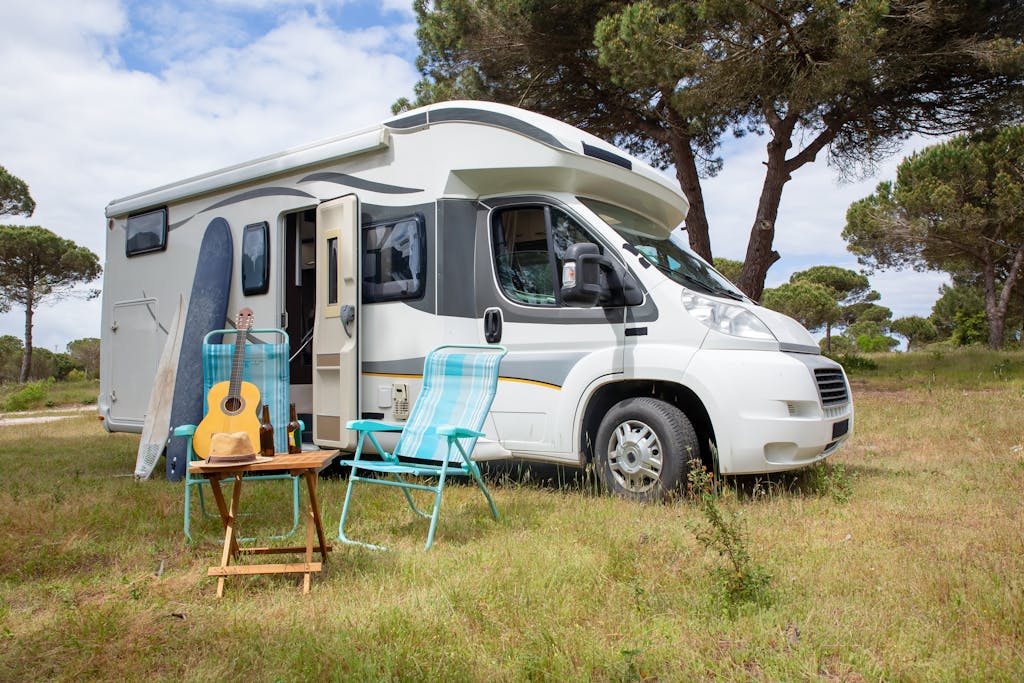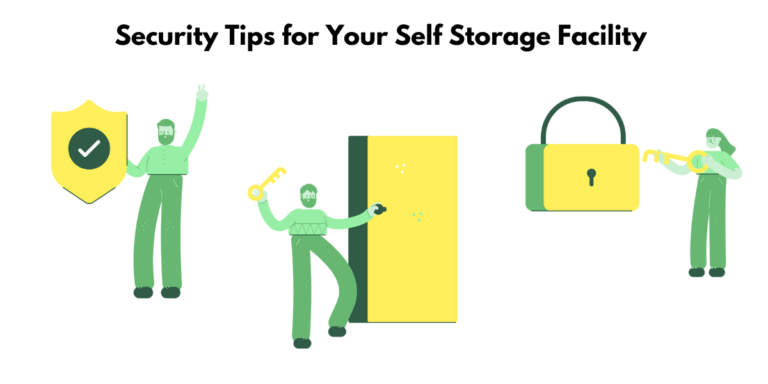RV Storage Prices: How Much Does It Usually Cost To Store An RV?
How Much is an RV Storage?
Are you thinking about storing your RV in a storage unit?
If so, you’re not alone. Storage units are becoming increasingly popular as people switch to RVs more and more.
But how much should you expect to pay for a storage unit?
Here is an overview of the average RV storage cost from setting up to using an RV storage unit.

What types of RV storage options are there?
There are a few different types of RV storage, and each has its advantages and disadvantages. Here is an overview of the main types:
Traditional storage
The traditional storage for RVs is in parking lots, which can be expensive. The most affordable storage option for recreational vehicles is renting a space in a self-storage facility. This can save you money in the long run and provide a more secure location for your RV.
Covered storage
One of the most viable storage options for recreational vehicles is covered and enclosed storage. This type of storage is outdoor storage where your RV or boat is under a canopy. With covered outdoor storage, your vehicle is shielded from weather and out of the sun, which can reduce the amount of damage it takes from the elements.
Boat storage
A boat storage facility is a great solution if you’re looking for an affordable storage option for your recreational vehicle. Storage facilities are an excellent solution if you want a secure space for your boat – you can store a camper on month-to-month contracts or keep it handy when it’s not on the road or at a campsite.
Industrial Storage
There are a few different types of RV storage; each has its benefits for different situations. For example, boat storage facilities can be used for recreational vehicle storage. The customer can access these facilities in different sizes and configurations.
Storage facilities can also be used for car storage. These facilities come in different sizes and are accessible to the public. Some of these facilities also have amenities like parking spaces or garages that can accommodate larger RVs.
Self-storage
The most affordable storage option for recreational vehicles is to store them at a self-storage company. This option is the safest and most secure, not to mention you can choose from different self-storage options, including a climate-controlled RV storage.

How much does it cost to store an RV?
If you are wondering how much it costs to store an RV. Here are some answers:
The average price of a covered RV storage unit is $75 per month
The average price of a covered RV storage unit is $75 per month. The average unit size that accommodates RVs is 15′ x 50′. The most expensive unit size is 15′ x 50′. The average storage rates for RV storage vary depending on location in the United States. State-by-state averages for monthly RV storage rates are provided.
The average price of an uncovered RV storage unit is $40 per month
The average price for an uncovered RV storage unit is around $40 per month. The monthly fee for an RV storage unit can vary depending on the amenities and location of the storage facility.
The average price of a 35-foot RV storage unit is $100 per month
The average price for a 35-foot RV storage unit is around $100 per month, and the monthly fee for a storage unit varies depending on the amenities included.
The average price of a 35-foot RV storage unit is $100 per month. The average size of a storage unit that can fit an RV is 10’x40 ′, 10’x50 ′, or 15’x40 ′. The largest storage unit size that can accommodate most RVs is 15’x50 ′, and the most expensive monthly rate is $184.19.
What are the benefits of using RV storage?
Here are some benefits of using an RV storage facility:
Secure storage for your RV
Storage facilities offer many benefits for recreational vehicle owners. They can be affordable and convenient, providing a place to store your RV while you’re away from home. In addition, Storage facilities typically have security measures in place to protect your RV from theft or damage.
Easy access to your RV
RV storage can be a great way to keep your recreational vehicle close to where you live, freeing up your time, so you don’t have to travel to use it. Storage facilities often have high fences, gated access, and video surveillance, making it easy to get in and out of your RV without worrying about theft or vandalism.
Peace of mind knowing your RV is safe and secure
RV storage provides a safe and secure place to store your recreational vehicle, which can be important for keeping thieves away. RV storage facilities often have high fences and gates, perfect for keeping RVers safe. When visiting storage facilities, it is important to look for security cameras and fencing. Securing an RV storage unit by locking and covering it to protect it from the elements is also important. Finally, measure the space before renting to ensure an adequate fit.
Enjoy the convenience of being close to your home.
Storage for recreational vehicles can be convenient for those who live in areas with a lot of space. RV storage facilities are located all over the country, so finding one close to your home is easy. This type of storage can also make it easier to hit the open road by being near an interstate highway or to your home.
Enjoy the comfort of knowing your RV is weatherproof
With RV storage benefits, you can enjoy your rig more while it’s in storage. Proper preparation can protect your RV from the elements and help keep repairs to a minimum.
Enjoy the convenience of having a 24/7 customer service team
RV storage benefits include easy access to your RV from any location, 24/7 customer service, and quick and reliable service. Whether you’re storing your RV for a short or extended period, Xtreme Storage is the perfect storage option.
What type of RV storage is right for you?
You might be wondering what type of storage to choose. Here are some tips to help you determine the right RV storage for you:
Step 1: Determine the size of the recreational vehicle
The size of the recreational vehicle is one of the first things to consider when choosing an RV storage space. For example, a 35-foot RV storage space can accommodate any vehicle, including Class A motorhomes, camper vans, and towable campers. If you are unsure about the size of your recreational vehicle, it is best to ask the RV dealer or manufacturer for help determining the appropriate size.
Step 2: Choose the type of recreational vehicle storage
The most affordable storage option for recreational vehicles is covered outdoor storage. This type of RV storage is protected by an awning structure, reducing the damaging effects of sun and rain. Outdoor RV storage is less damaging: This type of RV storage is protected by an awning structure, reducing the damaging effects of sun and rain. Shared indoor RV storage is cheaper than private indoor storage: You would share the space with other tenants but have your own reserved spot. Climate-controlled units are more expensive than outdoor or shared indoor RV storage: Opting for a climate-controlled unit would make it even more expensive. Check the size of your recreational vehicle: Remember to check the size before looking for RV storage. Indoor storage options: If you have a smaller recreational vehicle, you may be able to get away with self-storage units. Rates based on space available: If your camper requires less room at their facility, you will pay less in rates. You will need more space than a traditional storage unit offers: If you are in a 30′ rig, you will want a 35′ or more space. Size of recreational vehicle storage: Mid-size travel trailers and motorhomes need more room than the typical motorhome storage unit. Class A’s require height clearance of around 14′: Rigs like the Winnebago Adventurer 35B and the Fleetwood Bounder 35K will require a space larger than this amount. You may need to consider purchasing an extra property for your recreational vehicle storage: Class A rigs such as the Holiday Rambler Navigator, which is 45′, will require a 40 – 50 foot space to store correctly.
Step 3: Consider the location of the storage facility
When choosing RV storage, you need to consider the factors listed below. You should look for a storage facility close to the road to easily access it.
Step 4: Determine the length of time the recreational vehicle will be stored
Class A RVs are the largest recreational vehicles on the road and can be up to 45 feet long. They typically cost between $100 and $250 per month to store. Class B RVs are smaller than Class As but are still van-sized. They usually cost between $75 and $200 per month to store. A Class C RV is built on a truck chassis and ranges from 20 to 40 feet long. They typically cost between $50 and $150 per month to store.
Step 5: Consider the amenities offered by the storage facility
Facilities that offer extra amenities may charge an additional fee, but they usually offer features such as climate control, a recreation room, and a playground for RV owners. While these features are important to some RVers, others may not need them. It’s important to consider which amenities are important to you before deciding on storage.
Step 6: Compare the prices of different storage facilities
The price of RV storage will vary depending on the state where you store your RV. The best way to find the best storage rate for your needs is to search for it in your area.
Step 7: Read the reviews of the storage facility
When you’re looking for RV storage, reviews can be a helpful way to narrow down your options. It’s important to find a facility that is both suitable for your RV and meets your needs in terms of location, security, and price. Reading reviews from other RV owners can give you a sense of what to expect from different storage facilities and help you choose the right one.
Step 8: Choose the storage facility that best meets your needs
RV storage can be convenient and close to your home or the highway. Some of the most common types of RV storage include self-storage facilities, dealerships, and parking lots. Self-storage facilities are typically the most affordable option, while dealerships may offer more amenities, like access to washing machines and showers. Parking lots may be the best option for those who want a secure location for their RV but don’t have enough space in their yard or garage.
FAQs
Here are the most frequently asked questions about RV storage:

What are the protection options for RV Storage?
There are a few different types of RV storage, and the protection level and price will vary depending on your storage type. Indoor storage is expensive but offers the best protection from weather and theft. Shared indoor storage is less expensive than private indoor storage, but you must share space with other RVs. Private indoor RV storage is more expensive but gives you space to store your RV. Climate-controlled storage is often available for private indoor RV Storage, which protects your RV from extreme temperatures.
What are the accessibility options for RV Storage?
RV Storage can be accessed by individuals in several ways. RV storage employees are available to help those with disabilities navigate the site and find the items they are looking for. In addition, RV Storage offers various accessible items, including different sizes and shapes of containers, ramps, and lifts.
What are the amenities options for RV Storage?
When looking for an RV storage facility, there are many different amenities that you may want to consider. These include security, on-site support, and sewage dumping (which may incur additional fees). The rates for these amenities can vary depending on the facility, so deciding which ones are most important to you before renting a space is important.
How often should you start an RV in storage?
Starting an RV stored in a facility is important every few months to ensure the engine runs. Those who don’t start their RV stored in a facility run the risk of damaging their engine.
How do you prepare an RV for storage?
When prepping your RV for storage, the three main things you need to do are wash the RV, lubricate moving parts, and cover the tires.
Washing your RV will help eliminate any dirt or grime that could damage the paint or exterior over time. Be sure to use a mild soap and water solution to not damage the finish.
Lubricating moving parts will help prevent rust and corrosion while your RV is in storage. Be sure to lubricate door hinges, drawer slides, latches, and other moving parts.
Covering the tires will help protect them from UV rays and keep them from drying out and cracking. You can use a tire cover or put the RV up on blocks.
You should also cover it with a breathable tarp to protect it from the elements. To prevent mold and mildew, you should also use moisture-absorbent material inside the RV. Additionally, you should disconnect propane tanks and remove perishables and valuables.
- Inventory Storage: Why self-storage is the best solution for your inventory management - November 25, 2022
- Climate Controlled Storage: What is it, and do you need it? - December 1, 2021
- Storage Space and Inventory Management Solutions For Small Businesses - October 12, 2021







